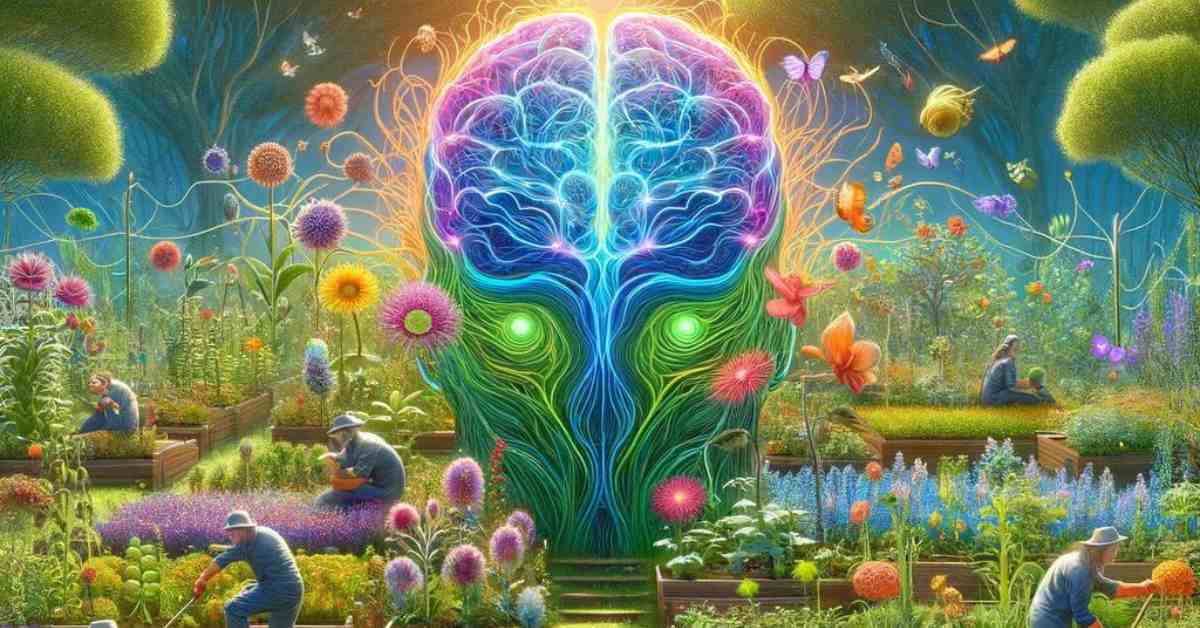What is Neuroplasticity?
Neuroplasticity is the brain's ability to create new neural connections and pathways, adapting both structure and function over time. As we learn new information, develop skills, or adjust to changes, our brains retain some flexibility to form new circuits.
Have you heard that psychedelics like psilocybin have the potential to positively "rewire" the brain? As researchers uncover more about how substances like magic mushrooms impact our neural connections, there's promising evidence they could provide therapeutic benefits by initiating renewed neuroplasticity.
Key Takeaways on Brain Rewiring
- Psychedelics like psilocybin can "rewire" brains by increasing neuroplasticity - forming new connections between senses and brain regions.
- Key mechanisms include expanded neural connectivity, dampened default mode network, increased neuron growth, and potentially clearing entrenched patterns.
- When psychedelic neuroplasticity aligns with intentional healing, researchers believe it could provide therapeutic benefits for mental health issues like depression.
- Preparing intentions beforehand and integrating insights afterward helps direct renewed brain connections for positive change.

What does it mean to "rewire" your brain, and why might that matter? Keep reading this comprehensive guide to understand the science behind neuroplasticity, how psychedelics could spur positive brain changes, key takeaways for leveraging brain healing, and answers to common questions.
- Key drivers of neuroplasticity include exposing the brain to new information, unique experiences, and acquiring knowledge. Brains stay more malleable when consistently challenged.
- Neural pathways that process information you access repeatedly grow stronger. Infrequently used connections may weaken over time in a "use it or lose it" manner.
- Psychedelics like psilocybin could kickstart renewed neuroplasticity by altering established pathways. The subsequent neurogenesis could enable clearing unhelpful patterns or adopting new, beneficial connections.
“Psychedelics invoke new patterns of functional connectivity between regions in the brain that don’t normally communicate with each other—which may manifest as seeing sounds or hearing colors,” explains psychedelic researcher Dr. Robin Carhart-Harris.
How Do Psychedelics Rewire the Brain?
Research points to psilocybin and other psychedelics as possible initiators of helpful neuroplasticity via a few key mechanisms:
- Increasing Overall Connectivity: Psilocybin expands communication between brain regions. Some of these new functional connections persist after the trip, allowing more cross-talk between senses, emotions, and associations.
- Quieting Default Mode Network: The default mode is responsible for our inner narrative and sense of self. Psilocybin dampening this area allows fresh perspectives and thinking patterns to take hold.
- Facilitating Neurogenesis: Animal studies reveal psilocybin spurs neuron growth in the hippocampus, helping form new memories and connections post-trip. Early evidence shows related dendrite growth in humans too.
"Psychedelics shake the snow globe of brain connectivity, enabling new patterns to emerge," says neuroscientist Dr. David Nutt.
Therapeutic Applications: Healing & Rewiring
A key reason scientists study psychedelic neuroplasticity is the hope that renewed brain connections could provide therapeutic benefits or healing.
- For treatment-resistant depression, psilocybin outperformed antidepressants in preliminary trials. Researchers believe shifting entrenched negative thinking pathways contributed.
- By allowing fresh perspectives, psychedelics could help break addictive patterns rooted in specific neural circuits as well.
- The profound sense of connection and spirituality many experience on psychedelics correlates to positive mental health outcomes, potentially from related brain changes.
To leverage the "rewiring" potential of psychedelics fully, preparation and integration matter:
- Having clear intentions for your psychedelic session helps consciously direct renewed neuroplasticity. Consider journaling or discussing desired change beforehand.
- Integrating insights, new thought patterns, and behavioral shifts from your experience afterward reinforces helpful new connections.
“The psychedelic experience provides an opportunity to rewrite certain patterns of thinking or behavior; integration is how we leverage and apply those insights moving forward,” says psychedelic therapist Dr. Elizabeth Nielson.
Frequently Asked Questions
Could micro dosing impact neuroplasticity too?
Potentially yes! Early evidence suggests regular micro dosing facilitates neural growth and communication between brain regions involved in emotion processing and cognition.
Do brains rewire naturally with age?
Brains continuously adapt to new information and experiences as we age, but neuroplasticity does decrease. Deliberately exercising neuroplasticity with learning new skills can help maintain sharpness longer.
How long do psychedelic brain changes last?
Research shows some expanded neural connections persist for weeks after tripping. To sustain benefits long-term, integrating psychedelic insights through life adjustments seems key.
Can I consciously direct my brain to rewire on psychedelics?
Having clear intentions for healing, behavior change, or mental shifts before tripping appears to help. Our brains stay somewhat suggestible during psychedelic sessions.
Could rewiring go negatively; is there risk?
With proper precautions, there’s little risk of long-term harm from psychedelic brain changes. Supportive contexts and integration guidance matter fostering renewed plasticity helpfully.
What other activities rewire brains?
Learning new skills, traveling, language exposure, making art, cognitive games, and mindfulness practices can all expand neural connectivity by introducing novelty.
How quickly could psychedelics spur new connections?
Increases in neural growth factors happen rapidly - within hours of dosing. Forming lasting new memories and mental shift pathways likely occurs over subsequent days or weeks integrating realizations.
Can micro dosing help break addiction pathways?
Some evidence suggests yes. Over weeks, regular micro doses could weaken specific connections driving addiction cravings while boosting plasticity in reward and self-control circuits.
What enhances psychedelic neuroplasticity?
Fasting beforehand, eyeshades and music during, certain supplements, adequate sleep, and reflective journaling afterward may optimize neural growth and change potential.
I hope this guide offers a helpful overview explaining what we know so far about psychedelics and neuroplasticity! Let me know if you have any other questions.

